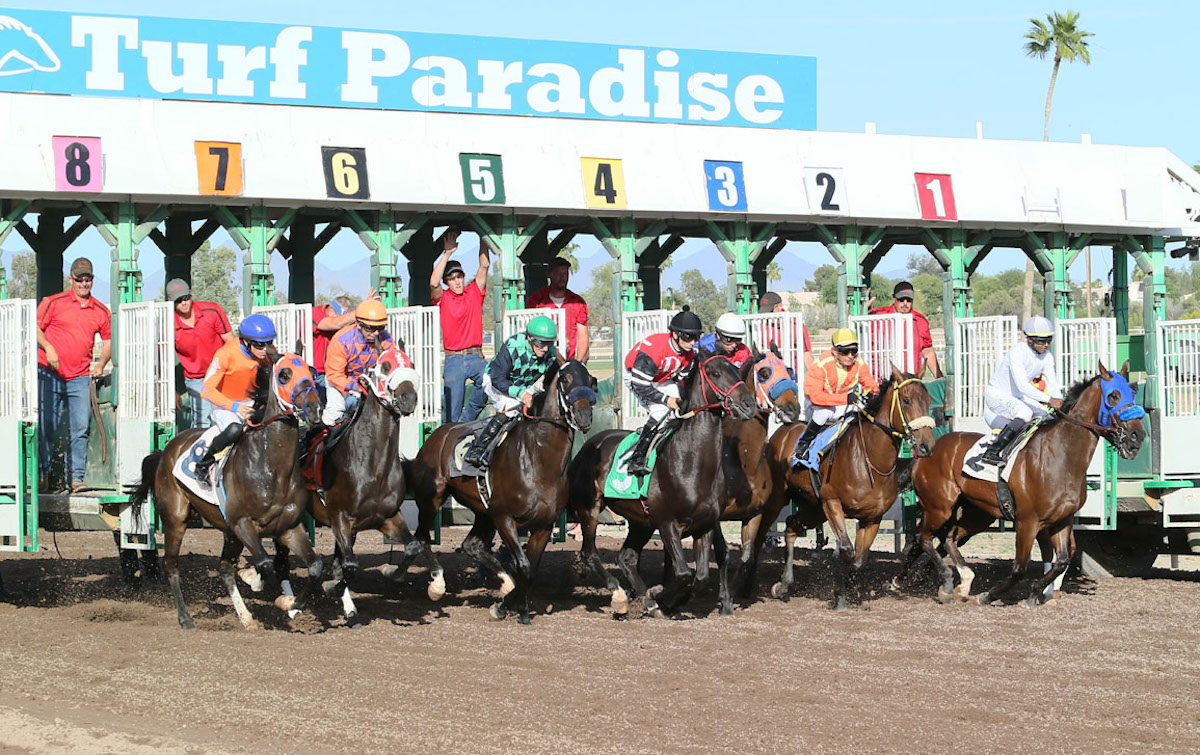
Hopes that the Horseracing Integrity and Safety Act would usher in a new era for US racing have been tempered amid myriad legal challenges and repeated delays. Daniel Ross attempts to plot a path through the minefield – and asks where now in the ongoing saga?
 As bumpy landings go, the Horseracing Integrity and Safety Act (HISA) might as well have been helmed by Chesley ‘Sully’ Sullenberger — the snowy-peaked pilot famous for landing an Airbus A320, engines stricken by a flock of Acme Corporation geese, on an icy Hudson River one frigid January morning in 2009.
As bumpy landings go, the Horseracing Integrity and Safety Act (HISA) might as well have been helmed by Chesley ‘Sully’ Sullenberger — the snowy-peaked pilot famous for landing an Airbus A320, engines stricken by a flock of Acme Corporation geese, on an icy Hudson River one frigid January morning in 2009.
It’s clear HISA has been a big unwieldy ship to steer into existence. It is no surprise then how since its legal inception as part of a $1.7 trillion federal omnibus spending bill in 2020, the law has endured enough plot twists to leave M. Night Shyamalan crippled with pangs of inferiority.
Just take the ‘will-they, won’t-they’ drama surrounding the United States Anti-Doping Agency’s (USADA) anticipated involvement as the program’s anti-doping and medication control (ADMC) enforcement agency.
USADA CEO Travis Tygart’s very public advocacy around HISA was instrumental in getting the law passed, and many understandably expected USADA to become the industry’s new drug police. Just two months before HISA’s official launch, however, cracks had grown into fault lines. USADA walked away from the negotiation table with a short and ambiguously worded statement begging readers to parse the subtext.
The shifting launch dates of key HISA programs has also left some stakeholders reaching for the Dramamine. As originally intended, the whole enchilada was set for go on July 1 last year. At the end of 2021, however, the “Authority” — the non-profit umbrella established by HISA to broadly oversee the law — announced that HISA’s out-of-competition testing program would launch on that day alongside the racetrack safety rules, but that the raceday testing portion of the law was punted to the start of 2023.
 In the end, the entire ADMC program start-date was pushed to March 27 of this year. Then on March 31, a federal judge in Texas judge stepped in to issue another 30-day moratorium, arguing that HISA was legally barred from going into effect until the end of April.
In the end, the entire ADMC program start-date was pushed to March 27 of this year. Then on March 31, a federal judge in Texas judge stepped in to issue another 30-day moratorium, arguing that HISA was legally barred from going into effect until the end of April.
As the industry moves once again towards a new ADMC program launch — against a legal minefield littered with half-a-dozen lawsuits each aiming to take the law out at its knees — where do things currently stand for HISA’s rollout?
Safety rules, ADMC program
On July 1 last year, when the racetrack safety portion of HISA went into effect, it followed a concerted nationwide HISA registration drive. According to the latest figures, 30,428 individuals and 43,829 horses are now registered.
Of the already implemented safety rules, HISA’s whip regulations have probably cultivated the bulk of the industry’s attention. The new rule book restricts whip use to six times during a race and no more than twice in succession, while riders cannot raise their wrists above their helmets prior to striking a horse. As of writing, HISA has issued 783 individual whip violations.
Outside of the new whip rules, HISA’s racetrack safety program covers a slate of issues, such as what horseshoes can be worn during training and racing, jockey concussion protocols, veterinary record keeping and rules surrounding the claiming of a horse, including voided claims.
 Participating tracks must also pass muster of an accreditation process encompassing a battery of requirements — the retention of a core group of safety and welfare personnel for one. Tracks must also enact racetrack surface maintenance protocols, and upgrade when necessary key parts of the facility to a baseline standard, such as the rails, gaps and starting gates. In this regard, Turf Paradise emerged as something of an early litmus-test for HISA’s regulatory bite.
Participating tracks must also pass muster of an accreditation process encompassing a battery of requirements — the retention of a core group of safety and welfare personnel for one. Tracks must also enact racetrack surface maintenance protocols, and upgrade when necessary key parts of the facility to a baseline standard, such as the rails, gaps and starting gates. In this regard, Turf Paradise emerged as something of an early litmus-test for HISA’s regulatory bite.
The Arizona racetrack has long faced scrutiny for a checkered equine welfare record. In January, HISA cited Turf Paradise for several safety-related problems like faulty track rails and a subpar racetrack surface maintenance program. The track subsequently entered into an agreement with HISA to resolve these issues but failed to show the necessary haste in doing so. In a hearing conducted over Zoom mid-March, HISA stewards gave the track until the end of the month to fix the problems.
Turf Paradise ultimately complied. Still, news that the track’s owners are reportedly in the due-diligence phase of negotiations to sell the facility for development gives HISA’s overtures a certain hollow ring.
Not all states currently fall under HISA’s jurisdiction. Federal lawsuits currently bar its implementation in West Virginia and Louisiana. Texas has also taken a reliably Texan stance against federal oversight.
The state’s racing commission has maintained that state law prohibits them from giving the federal government authority over races conducted in their jurisdiction, with the long and short of it that no Texas-based racetracks have been able to beam their simulcasting signal out of the state for nearly ten months now — a scenario with growing implications for the long-term financial sustainability of the racing industry there.
Pending litigation
Still, when HISA’s anti-doping and medication control program goes into effect later this month — barring another Bobby Ewing-like improbable intervention — the bulk of the nation’s racetracks will be operating under these rules. Overseeing them will be the Horseracing Integrity and Welfare Unit (HIWU), the enforcement agency established in 2022 by Drug Free Sport International, a company that offers drug testing services to a host of national sporting programs like the National Football League and the National Basketball Association.
 The new ADMC program covers among many things uniform drug rules, sample collection, out-of-competition testing, laboratory accreditation and the adjudication of medication violations. Interestingly, these rules could have implications probably not envisaged when first drafted.
The new ADMC program covers among many things uniform drug rules, sample collection, out-of-competition testing, laboratory accreditation and the adjudication of medication violations. Interestingly, these rules could have implications probably not envisaged when first drafted.
For nearly a year and a half, the California Veterinary Medical Board (VMB) and the California Horse Racing Board (CHRB) have been at a regulatory impasse. In the crosshairs is California’s backstretch veterinary community, unsure of whose set of rules to adhere: those of the VMB or the CHRB? This dilemma has left some of the vets in this colony in serious professional jeopardy, allegedly in violation of the VMB’s regulatory standards even when following the CHRB’s rules.
Because of federal pre-emption over state laws, HISA’s new ADMC program is expected to resolve some key areas of confusion, though frustratingly for many involved, not all of them.
Several other important questions also remain unresolved — most pressingly for some, the issue of cost. HISA hasn’t yet invoiced any state racing commissions for their 2023 fees but will be doing so soon. In the meantime, California has agreed to stump up their 2023 fee assessments. Ohio, Oklahoma, Arizona, New York Kentucky and Iowa have punted these payments down to the tracks in their states. How will the other jurisdictions act?
While on the topic of cost, earlier this month Kentucky lawmakers approved a resolution that urges HISA and the law’s oversight agency, the Federal Trade Commission, to review the methodology it uses to calculate its fees.
As HISA’s worker bees continue to build out its programs, the agency’s legal eagles continue to duck and dodge the slings and arrows of an assortment of lawsuits seeking to cripple or topple altogether the federal law.
Earlier this year, the US Sixth Circuit Court of Appeals upheld HISA’s constitutionality in a case led by the states of Oklahoma, West Virginia and Louisiana. In response, the plaintiffs have petitioned for a rare en banc rehearing of the case before all 28 of that court's judges.
On the other hand, the US Fifth Circuit Court of Appeals found the law unconstitutional, and sent it back to the Federal District Court for the Northern District of Texas, Lubbock. A hearing is expected soon in this case, into which has been rolled another lawsuit filed in the Federal District Court for the Northern District of Texas, Amarillo.
Another case within the broader Fifth Circuit — one led by the State of Louisiana — is currently before the Federal District Court for the Western District of Louisiana, Lafayette. Two other new HISA-related cases have also been filed in Oklahoma City and in Little Rock, Arkansas.
The wintery New York skies the day Sullenberger safely glided onto the Hudson were brisk and clear with little headwind — quite the opposite kind of metaphor for what HISA has so far encountered.
The 155 white-knuckled passengers who stepped aboard Sullenberger’s Airbus A320 that January afternoon disembarked via inflatable slides largely unscathed — save, one imagines, the odd existential crisis and a few hurried trips to the nearest laundromat.
Quite what the industry’s tens of thousands of participants can expect between now and when the great ship HISA has properly found its moorings remains a story yet to be told. But if the preceding journey has proven any guide, choppy waters and a few green gills are probably a given.
• Visit the HISA website
Jay Hovdey’s Favorite Racehorses: Vasilika – ‘She was special, very game and very smart’
View the latest TRC Global Rankings for horses / jockeys / trainers / sires


